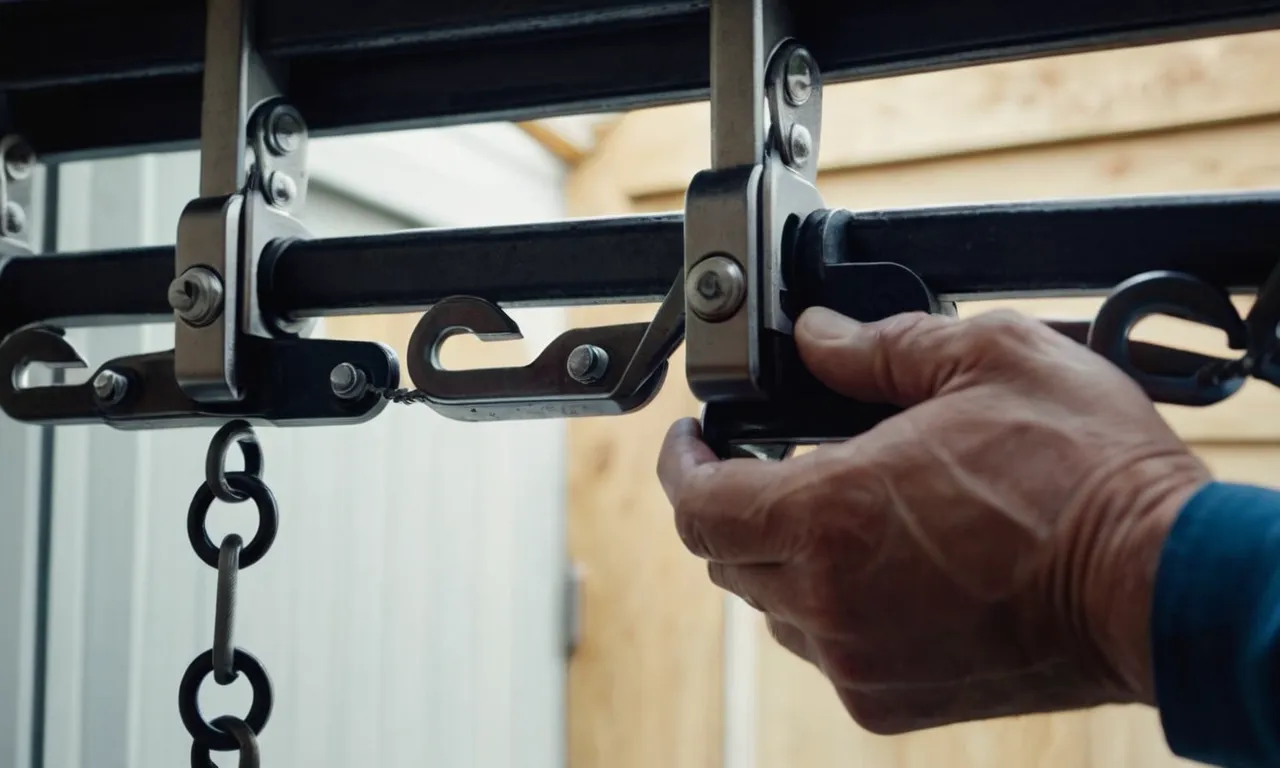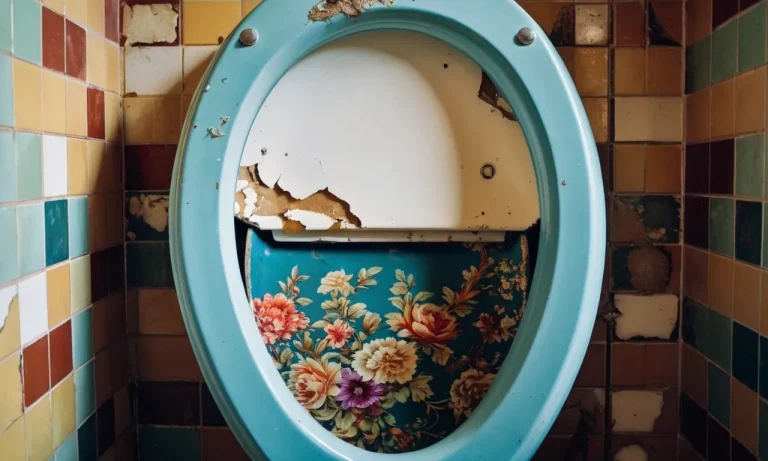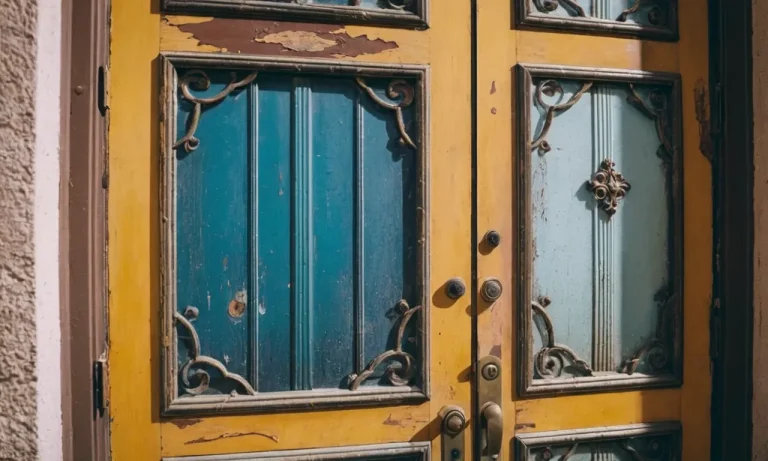How To Fix A Garage Door Chain
Is your garage door making a grinding noise when it opens or closes? If so, the problem likely lies with the door’s chain drive system. Fortunately, fixing a noisy or broken garage door chain is an easy DIY project that you can tackle in an afternoon.
If you’re short on time, here’s a quick answer to your question: Lubricate the chain, tighten loose screws, and replace damaged or worn parts like sprockets and bearings. Adjusting the chain tension properly will also help quiet a noisy garage door chain.
Understanding the Garage Door Chain Drive
When it comes to garage door openers, one of the most common types is the chain drive system. This system uses a metal chain to operate the door and is known for its durability and reliability. Understanding how the chain drive system works and being aware of signs of a problem can help you maintain and fix your garage door chain effectively.
How the Chain Drive System Works
The chain drive system operates by using a metal chain, similar to a bicycle chain, to pull the garage door up and down. The chain is connected to a motor, which powers the opening and closing of the door. As the motor turns, it moves the chain, causing the door to move along the track.
The chain drive system is known for its strength and ability to lift heavy garage doors.
One of the advantages of the chain drive system is its affordability. Compared to other garage door opener systems, such as belt drives or screw drives, the chain drive system is generally more cost-effective. It is a popular choice for homeowners looking for a reliable and budget-friendly option.
Signs of a Problem with the Chain
While the chain drive system is known for its durability, it can still experience issues over time. It is important to be aware of the signs that indicate a problem with the garage door chain. Some common signs include:
- Excessive noise: If you notice loud grinding or rattling sounds when operating the garage door, it may be a sign that the chain needs lubrication or adjustment.
- Slack in the chain: A loose chain can cause the garage door to operate improperly or even become stuck. Regularly check the tension of the chain and adjust it if necessary.
- Visible damage: Inspect the chain for any signs of wear and tear, such as broken links or rust. If you notice any damage, it is important to replace the chain as soon as possible to prevent further issues.
If you encounter any of these issues, it is recommended to consult a professional garage door technician. They can assess the problem and provide the necessary repairs or replacements. Additionally, regular maintenance of the chain drive system, such as lubrication and tightening, can help prevent future problems and extend the lifespan of your garage door.
For more information on garage door maintenance and repair, you can visit www.garagedoor.com, a trusted resource for all things related to garage doors.
Inspecting and Lubricating the Chain
Regular inspection and lubrication of the garage door chain is essential to ensure its smooth operation and prevent any potential issues. By following these steps, you can keep your garage door chain in excellent condition:
Lubricating the Chain
One of the first steps in maintaining a garage door chain is to lubricate it regularly. This helps to reduce friction and prevent the chain from becoming stiff or stuck. To lubricate the chain:
- Start by cleaning the chain with a rag to remove any dirt or debris that may have accumulated.
- Apply a high-quality garage door lubricant or silicone spray to the chain. Be sure to apply the lubricant evenly and thoroughly, covering all parts of the chain.
- Move the garage door up and down a few times to ensure the lubricant is distributed evenly.
Regular lubrication of the garage door chain will help to extend its lifespan and ensure smooth operation.
Inspecting the Chain for Damage
In addition to lubrication, it is important to regularly inspect the garage door chain for any signs of damage or wear. This can help identify potential issues before they become major problems. Here are some key areas to check during the inspection:
- Chain tension: Check the tension of the chain by ensuring it is not too loose or too tight. An overly loose chain can cause the door to sag, while an overly tight chain can put strain on the motor.
- Chain alignment: Make sure the chain is properly aligned and running smoothly along the track. If it appears to be misaligned, it may need to be adjusted or realigned.
- Chain condition: Look for any signs of wear or damage on the chain. This can include broken links, excessive rust, or signs of fraying. If any damage is detected, the chain may need to be replaced.
By regularly inspecting the garage door chain and addressing any issues promptly, you can prevent potential malfunctions and ensure the continued smooth operation of your garage door.
Adjusting the Chain Tension
One of the common issues with a garage door chain is improper tension, which can cause the door to malfunction or become noisy. Fortunately, adjusting the chain tension is a relatively simple process that can be done by following a few steps.
Checking and Adjusting Tension
To begin, it’s important to first check the tension of the garage door chain. Start by disconnecting the power to the garage door opener to ensure safety. Then, locate the tension adjustment mechanism on the garage door opener. This can usually be found near the motor unit.
Once you’ve located the tension adjustment mechanism, use a wrench to loosen the lock nut that holds the tension adjustment bolt in place. This will allow you to adjust the tension of the chain. Turn the adjustment bolt clockwise to tighten the chain or counterclockwise to loosen it.
After making the necessary adjustments, use a tape measure to ensure that the chain is properly tensioned. A good rule of thumb is to have about 1/2 inch of deflection in the chain when pressed down at the midpoint between the opener and the door.
If the chain is too loose or too tight, continue adjusting until the proper tension is achieved.
Tightening Loose Screws
In addition to adjusting the chain tension, it’s also important to check for any loose screws or bolts that may be contributing to the problem. Over time, vibrations from the garage door opener can cause screws to become loose, leading to chain issues.
Inspect the entire chain assembly, including the brackets, bolts, and screws. Use a screwdriver or wrench to tighten any loose fasteners that you come across. This will help ensure that the chain remains securely in place and operates smoothly.
Regular maintenance is key to keeping your garage door chain in optimal condition. By checking and adjusting the tension as needed, as well as tightening any loose screws, you can prevent potential issues and keep your garage door functioning properly for years to come.
Replacing Damaged Parts
Replacing the Chain
If your garage door chain is damaged or broken, it is important to replace it promptly to ensure the smooth operation of your garage door. Start by disconnecting the power to the garage door opener to avoid any accidents.
Then, locate the chain tension adjustment mechanism and loosen it to relieve tension on the chain. Next, remove the damaged chain by unbolting it from the trolley and sprocket. Take note of how the old chain was threaded through the sprocket and trolley for easy installation of the new one.
When installing the new chain, make sure it is properly aligned with the sprocket and trolley. The chain should be threaded through the sprocket and then connected to the trolley using the bolts provided.
Once the new chain is securely in place, tighten the chain tension adjustment mechanism to ensure the proper tension for smooth operation. Finally, reconnect the power to the garage door opener and test the door to ensure it is functioning correctly.
Changing Sprockets and Bearings
In addition to replacing the chain, it may also be necessary to change the sprockets and bearings if they are damaged or worn out. The sprockets are responsible for transferring power from the motor to the chain, while the bearings help the sprocket rotate smoothly.
Over time, these components can become worn and affect the overall performance of the garage door.
To change the sprockets and bearings, start by disconnecting the power to the garage door opener. Then, locate the sprocket and bearing assembly, which is usually located near the motor. Remove any covers or guards that may be in place to access the assembly.
Once exposed, use the appropriate tools to remove the old sprockets and bearings.
When installing the new sprockets and bearings, make sure they are the correct size and fit snugly into place. Secure them using the provided bolts or screws, ensuring they are tightened properly. Once everything is securely in place, reconnect the power to the garage door opener and test the door to ensure it is functioning smoothly.
It is worth noting that replacing damaged parts on a garage door can be a complex task and may require the assistance of a professional. If you are unsure about your ability to perform these repairs, it is best to consult a qualified technician who can safely and efficiently fix your garage door chain.
Maintaining the Garage Door Chain
The garage door chain is an essential component of your garage door system. It is responsible for lifting and lowering the door smoothly and efficiently. To ensure its proper functioning, regular maintenance is necessary. Here are some tips to help you maintain your garage door chain:
Lubricating on a Schedule
One of the most important steps in maintaining your garage door chain is regular lubrication. Over time, the chain can become dry and start to wear out, causing it to become noisy and less efficient. By applying lubricant to the chain on a schedule, you can prevent this from happening and extend the lifespan of your chain.
It is recommended to lubricate the chain every three to six months, or more frequently if you live in an area with extreme weather conditions.
Pro Tip: Use a high-quality garage door lubricant specifically designed for chains. Apply a small amount of lubricant to each link of the chain, making sure to cover the entire length. Wipe off any excess lubricant to prevent it from attracting dirt and debris.
Watching for Signs of Wear
In addition to regular lubrication, it’s important to keep an eye out for signs of wear on your garage door chain. As the chain ages and wears out, it may start to show signs of rust, loose links, or excessive slack.
These issues can lead to a malfunctioning garage door or even a complete chain failure. Inspect the chain regularly and look for any signs of damage or wear. If you notice any issues, it’s crucial to address them promptly to prevent further damage.
Pro Tip: If you notice any signs of wear or damage on your garage door chain, it’s best to consult a professional. They will have the expertise to assess the situation and recommend the appropriate repairs or replacements.
By following these maintenance tips, you can keep your garage door chain in excellent condition and ensure the smooth operation of your garage door. Remember, a well-maintained garage door chain not only extends the lifespan of the chain but also enhances the overall safety and functionality of your garage door system.
Conclusion
By following these steps, you can get your noisy garage door chain running smoothly and quietly again. Regular inspection and maintenance will help prevent future problems. If the chain is severely damaged or worn out, replacement may be required.
But in most cases, some simple adjustments and part replacements will have your garage door chain drive working like new again.







